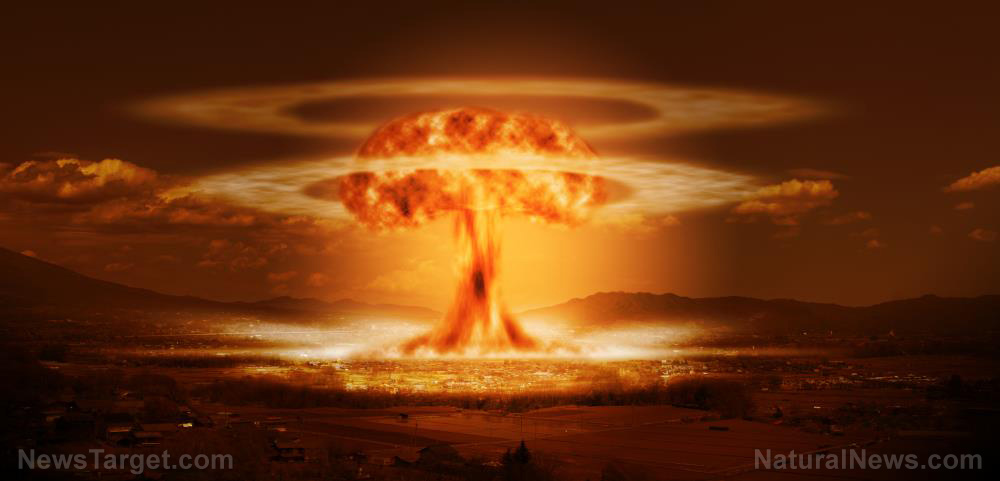Experts warn US missile defenses are wholly inadequate to defend against Russian, Chinese weapons
07/18/2022 / By JD Heyes

Since the 1980s, the United States has poured hundreds of billions of dollars into the development of missile defenses capable of not only protecting the homeland but also multibillion-dollar platforms like aircraft carriers and Air Force bases that are home to our most advanced warplanes.
But over the past decade or so as the U.S. remained bogged down in two low-level conflicts in Iraq and Afghanistan, the Russians and the Chinese were pouring money into the development of next-gen missiles that are so fast current missile defense systems are essentially obsolete.
The Russians appear to have fielded a hypersonic missile that far outclasses any current U.S. missile defense system. In fact, Moscow has used its hypersonic missiles at least a dozen times in its war with Ukraine.
Meanwhile the Chinese are on the verge of fielding a similar weapon. And while the Pentagon made some strides toward developing a hypersonic weapon in recent months, our country is still years away from deploying it.
That means, in the meantime, America and American forces are extremely vulnerable to such weapons.
“Since Russian President Vladimir Putin’s full-scale invasion of Ukraine nearly five months ago, Russia’s cruise missiles, which can be launched from the air or by sea, have become the Kremlin’s garden-variety weapon. And they’ve scrambled the minds of American defense planners, who spent decades planning to defend against a nuclear attack by a rogue state, like North Korea, and now have to contend with non-nuclear weapons that can outfox traditional missile defenses,” Foreign Policy magazine reported this month.
The report adds:
The United States does not have the defenses to keep up with Russian and Chinese advances in cruise missile technology, according to a new report set for release Thursday by the Center for Strategic and International Studies (CSIS), a Washington think tank. While the U.S. defensive structure remains focused on ballistic missiles, which are easier to defend against because they leave and reenter the atmosphere in a predictable trajectory, the report authors are calling on the Pentagon to beef up a constellation of radars.
They call for more U.S.-based over-the-horizon radars, which peer far from the homeland, and prioritized area radars, which focus on U.S. territory, to more quickly respond to Russia and China if they fire a weapon at the United States from the Arctic or Atlantic oceans.
“The current system of command and control, though staffed by highly dedicated U.S. and Canadian military personnel, employs 1990s-era technology and uses 1960s-era decision processes,” the CSIS authors wrote in their report. “Besides a near complete lack of mission integration, there are almost no purpose-built defenses against low-altitude cruise missile threats.”
The modernization efforts to upgrade sensors, shooters and radars would take 20 years to complete at a cost of around $33 billion, and frankly, the speed at which technology changes, those systems may be obsolete by then.
Still, doing nothing is not an option.
“Under the plan, the United States would first add four over-the-horizon radars that range more than 600 miles offshore and one area defense radar, before completing 360-degree coverage in three phases. Those defenses would be backstopped by fighter jets; CSIS also leaves open the possibility for adding space-sensing capabilities and drone and hypersonic defenses in the future,” Foreign Policy reports.
There is also this: Hypersonics can circle the planet at five times the speed of sound, while some models are capable of dodging missile defenses.
New variants of Russian and Chinese cruise missiles cover “a whole lot of the United States with standoff capability,” Tom Karako, a senior fellow at CSIS and the lead author of the report, told FP. “It’s pretty astonishing.”
That means that Russia and China possess nuclear-level devastation capability without actually resorting to such weapons. China’s DF-26, for instance, has been dubbed the “Guam killer” because it could destroy much of the U.S. military base there without a nuclear strike.
The answer? Laser weapons, of course, because they are economical, shoot at the speed of light and are more easily deployed.
But those aren’t ready yet, either.
Sources include:
Submit a correction >>
Tagged Under:
big government, chaos, China, defense weapons, fighter jets, future tech, guam, hypersonic missiles, lasers, military tech, missile defense, national security, panic, radar, Russia, sensors, shooters, Ukraine, United States, weapons technology, World War III
This article may contain statements that reflect the opinion of the author
RECENT NEWS & ARTICLES
COPYRIGHT © 2018 PANIC.NEWS
All content posted on this site is protected under Free Speech. Panic.news is not responsible for content written by contributing authors. The information on this site is provided for educational and entertainment purposes only. It is not intended as a substitute for professional advice of any kind. Panic.news assumes no responsibility for the use or misuse of this material. All trademarks, registered trademarks and service marks mentioned on this site are the property of their respective owners.




















